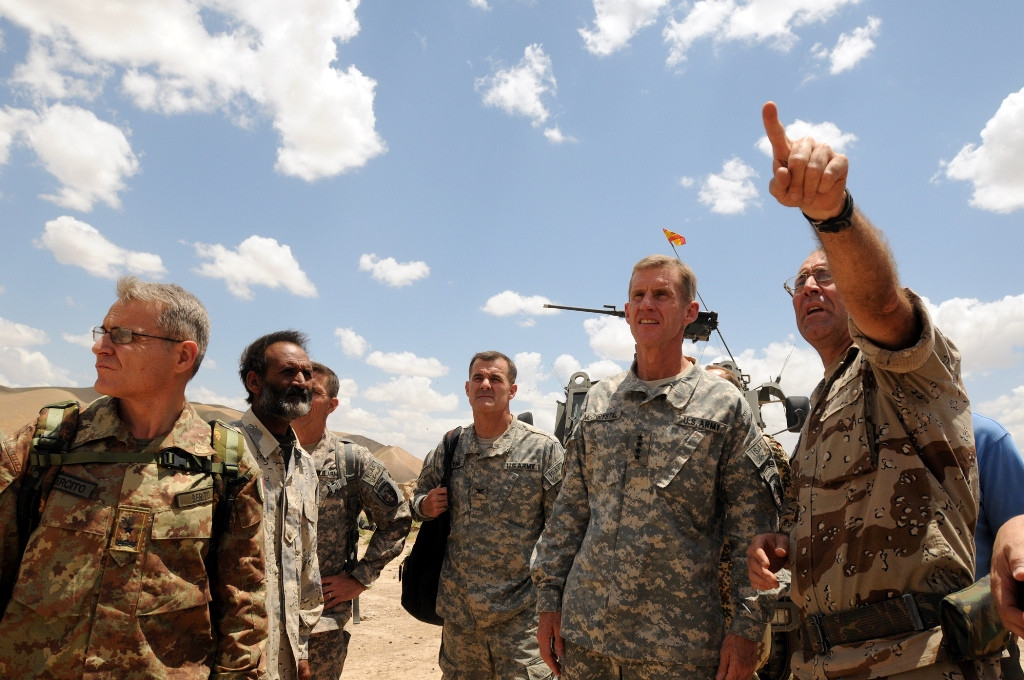Organizational Friction and the Team of Teams Approach in Afghanistan

Kori Schake’s critique of Stan McChrystal’s recently released Team of Teams is right on track. Her suggestion that it would have been enlightening for Gen. McChrystal to have compared his experience as the leader of special operations forces in Iraq with his tenure as ISAF commander in Afghanistan raises interesting questions.
How well did the team-based approach work in Afghanistan? The tempo and sophistication of special operations kill/capture missions increased by an order of magnitude during McChrystal’s tenure at ISAF from June 2009 to June 2010. There is no question that, just as in Iraq, this organizational evolution, paired with technology, permitted an increased op tempo that removed large numbers of Taliban “enemy” from the battlefield with lethality and precision. At the same time, McChrystal sponsored ISAF Commander’s Counterinsurgency Guidance to the forces involved in the troop surge that was happening at the same time. It declared, “Protecting the people is the mission,” and imposed restraint on the U.S. military that was contrary to its nature as a regular warfighting organization. Arguments about the efficacy of COIN aside, such enlightened warfare required both approaches.
Were teams the solution to organizational challenges in Afghanistan? The requirements of Operation Enduring Freedom as a whole were far more complex than the manhunting that was SOF’s tightly focused mission. Only the regular Army and other services could provide the organizational integrity essential for sustained campaigning on a large scale. An intelligent and adaptive balance of teams and hierarchy was necessary all around. The problem was that mix took nearly a decade to get it in place, and even then serious organizational friction remained.
Kori Schake also wonders how a team-based approach would have worked with the widely distributed authorities of the coalition in Afghanistan. COIN by coalition at its peak involved not only NATO, but a total of over 40 nations, each with its own interests, prerogatives, caveats, institutions, programs, and areas of responsibility. The principal headquarters adaptation actually multiplied complexity by creating the ISAF Joint Command (IJC), with a complement of 19 general officers, which paralleled and in some respects overlapped with ISAF. The U.S. effort itself was enormously complex — Marines with their own command in Helmand, along with a civilian surge, major counternarcotics operations, and the CIA’s largest overseas station, each operating under its own authority. Improvements in performance were badly needed, but how a team of teams might have worked is hard to envision. It must have occurred to McChrystal that holding together unity of purpose at all was in itself an amazing achievement.
A final note: The organizational friction that characterized much of the U.S.-led effort reflected Afghanistan’s own fractiousness. The irony was not lost on the Afghans, with their highly networked tribes and political clans and the kaleidoscopic political-military competition that characterizes their way of war. The United States never really did master Afghanistan’s organizational nature, and this is one of the reasons why, with or without teams, so much time and effort in Afghanistan achieved such inconclusive results.
Todd Greentree is a former Foreign Service Officer who has served in five conflicts, most recently in Afghanistan. He is currently a Research Associate with the Oxford Changing Character of War Programme. His article “Bureaucracy Does Its Thing: U.S. Performance and the Institutional Dimension of Strategy in Afghanistan” appeared in the May 2013 issue of the Journal of Strategic Studies.
Photo credit: ResoluteSupportMedia

